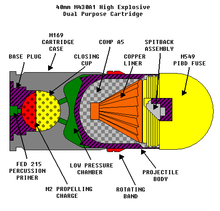Exploring the Design and Functionality of Grenades and Explosive Projectiles

Exploring the Design and Functionality of Grenades and Explosive Projectiles
From the battlefield to the demolition site, grenades and explosive projectiles have shaped history and continue to play a crucial role in modern warfare and specialized operations. This exploration delves into the intricate design and functionality of these devices, revealing the fascinating interplay of physics, chemistry, and engineering.
The Anatomy of a Grenade: A Closer Look
Grenades, essentially hand-thrown explosive devices, are deceptively simple yet incredibly complex in their execution. Their design centers around a few key components:
-
Body: Typically made from durable metal or polymer, the body houses all the internal components and protects them from damage until detonation. Design considerations here involve weight, aerodynamics, and resistance to shock and impact.
-
Fuse: This is the heart of the grenade’s timing mechanism. Fuses vary wildly, from simple time-delay mechanisms to impact-activated detonators and sophisticated electronic systems allowing for programmable detonation. The fuse’s reliability is paramount.
-
Explosive Fill: The payload. Common explosives include TNT, Composition B (a mixture of RDX and TNT), and plastic explosives. The choice of explosive depends on the intended effect – high blast effect, fragmentation, or a combination.
-
Fragmentation Liner (Optional): Many grenades incorporate a fragmentation liner, a scored metal casing designed to break into lethal fragments upon detonation, maximizing casualty potential. The design of these liners, including the material, thickness, and scoring pattern, directly influences the fragmentation pattern and effectiveness.
-
Safety Mechanisms: Critically important, these prevent accidental detonation. These can range from a simple pin and lever system to more intricate mechanical or electronic safety features.
Types of Grenades: A Diverse Arsenal
The world of grenades boasts incredible diversity, tailored to specific tactical needs:
-
Frag Grenades: Designed primarily for fragmentation, inflicting casualties over a wide area.
-
Smoke Grenades: Produce a dense cloud of smoke for concealment or signaling.
-
Incendiary Grenades: Designed to start fires.
-
Flashbang Grenades: Create a blinding flash and deafening bang, temporarily incapacitating targets.
-
Concussion Grenades: Primarily cause concussive damage, less lethal than frag grenades.
| Grenade Type | Primary Effect | Typical Fill |
|---|---|---|
| Frag | Fragmentation | TNT, Composition B |
| Smoke | Smoke Screen | Various chemicals |
| Incendiary | Fire | Thermite, WP |
| Flashbang | Flash & Concussion | Flash powder |
| Concussion | Concussion | High explosives |
Explosive Projectiles: Beyond Hand-Thrown
Explosive projectiles, fired from cannons, mortars, and rockets, represent a significant escalation in destructive power. Their design shares some similarities with grenades but introduces additional complexities due to the high velocities and forces involved.
Key Design Considerations for Projectiles:
-
Aerodynamics: Projectiles must maintain stability and accuracy during flight, often incorporating fins or spin stabilization.
-
Fuze Mechanism: The fuze must withstand the shock of launch and reliably detonate the explosive fill at the intended target. Proximity fuzes, delayed fuzes, and impact fuzes all play vital roles, each with its strengths and weaknesses.
-
Warhead Design: The warhead design dictates the projectile’s effect. High-explosive projectiles create blast and fragmentation, while shaped charges concentrate the explosive force for penetration.
Types of Explosive Projectiles: A Spectrum of Destruction
The variety of explosive projectiles is vast, reflecting their diverse applications:
-
Artillery Shells: Fired from cannons, ranging from small howitzers to massive siege guns.
-
Mortar Bombs: High-angle fire projectiles, ideal for indirect fire support.
-
Rockets: Self-propelled projectiles capable of long-range strikes.
-
Guided Missiles: Equipped with guidance systems for precision targeting.
| Projectile Type | Launch System | Typical Effects |
|---|---|---|
| Artillery Shell | Cannon | Blast, Fragmentation |
| Mortar Bomb | Mortar | Blast, Fragmentation |
| Rocket | Rocket Launcher | Blast, Fragmentation, HEAT |
| Guided Missile | Launcher | Precision Strike |
The Future of Grenades and Explosive Projectiles
Ongoing research and development continuously push the boundaries of grenade and projectile technology. Smart munitions, incorporating advanced guidance and targeting systems, are becoming increasingly prevalent. Non-lethal options are also under development, focusing on crowd control and minimizing collateral damage. The future will likely see even more sophisticated designs, balancing destructive power with precision and safety.

